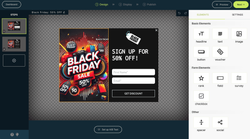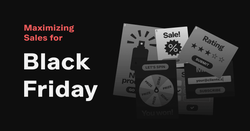
Optimizing E-commerce Design: Best Practices for Enhanced User Engagement and Sales
Discover how implementing essential e-commerce design best practices can significantly improve user engagement, increase conversions, and boost your online sales. Learn actionable strategies to optimize your website's design for a seamless user experience that keeps customers coming back.
- Written by Milla Leane |
- February 13, 2025
In today's digital era, the e-commerce industry is experiencing unprecedented growth, making the online marketplace more competitive than ever. With countless options available at the click of a button, the design of your online store plays a pivotal role in attracting potential customers and encouraging them to choose your brand over others. A well-crafted e-commerce website not only enhances user experience but also significantly boosts conversion rates by turning casual browsers into loyal buyers.
The importance of effective e-commerce design cannot be overstated. It's the foundation upon which customer trust is built and brand credibility is established. A visually appealing and user-friendly website helps visitors easily find what they're looking for, leading to increased customer satisfaction and repeat business. Moreover, with the majority of consumers now shopping on mobile devices, optimizing your online store for mobile responsiveness is crucial for reaching a wider audience.
Understanding the Importance of E-commerce Design
Your website is often the first point of contact between your brand and potential customers. In the competitive landscape of online retail, a visually appealing and user-friendly website can make the difference between a sale and a missed opportunity. Good design builds trust, enhances credibility, and encourages visitors to explore your products or services further.
Studies show that 94% of first impressions are design-related, emphasizing the need for an optimized online presence.
Factors such as intuitive navigation, high-quality visuals, fast loading times, and clear calls-to-action all contribute to a seamless shopping experience. In this comprehensive guide, we'll delve into essential e-commerce design best practices that can help you optimize your online store for maximum user engagement, improve your search engine rankings, and drive significant sales growth.
Essential E-commerce Design Best Practices
Implementing best practices in e-commerce design can significantly improve user experience and increase sales.
Some key strategies:
- Simplify Navigation: Ensure your website's navigation is intuitive and straightforward. Visitors should be able to find what they're looking for with minimal clicks.
- Optimize for Mobile Devices: With a significant portion of online shopping done on mobile devices, it's crucial that your website is responsive and functions seamlessly on all screen sizes.
- High-Quality Visuals: Use high-resolution images and videos to showcase your products. Quality visuals can enhance user engagement and increase the perceived value of your products.
- Fast Loading Times: Optimize your website's performance to ensure quick loading times. In the web, performance and user experience are paramaunt.
- Clear Call-to-Actions (CTAs): Use prominent and compelling CTAs to guide users towards desired actions, such as making a purchase or signing up for a newsletter.
- Trust Signals: Incorporate trust badges, customer reviews, and secure payment icons to build credibility and reassure customers about the safety of their transactions.
Next-Gen Image Formats: To enhance your website’s visuals and improve loading times, consider using these next-generation image formats:
WebP: Created by Google, WebP is designed to replace older formats like JPEG, PNG, and GIF. It offers both lossy and lossless compression, supports animations, and is compatible with most major browsers. However, some content management systems (CMS) may not yet support WebP images.
AVIF: AVIF is an open-source format that uses the AV1 codec within the HEIF container. It provides better lossless compression than JPEG and PNG, maintaining high image quality with smaller file sizes. Currently, AVIF is not as widely supported by browsers as WebP.
In addition, as web design trends continue to evolve, incorporating elements like white space, dark mode, and minimalism has become essential. Recent insights on web design trends highlight how these elements can enhance user engagement and set your online store apart from the competition.
Enhancing User Experience Through Personalization

Personalization is a powerful tool in e-commerce design. By tailoring the shopping experience to individual user preferences, you can increase engagement and foster customer loyalty. Consider implementing personalized product recommendations, dynamic content, and customized offers based on user behavior and purchase history. This approach not only improves user satisfaction but can also lead to higher conversion rates.
The Role of A/B Testing in Design Optimization
Leveraging Onvocado's Tools for E-commerce Success
At Onvocado, we deliver innovative solutions designed to enhance your e-commerce design and maximize user engagement. Our platform offers a comprehensive suite of tools—including customizable non-intrusive pop-ups and interactive widgets—that enable you to connect with your customers more effectively. By incorporating advanced SEO strategies and integrating Onvocado's features into your website, you can implement many of the best practices discussed and elevate your online store's performance, staying ahead in the era of AI-powered search engines.
Conclusion: Driving Growth Through Effective Design
Share this article
About the author

Milla Leane
Milla is a content creator and is all about creating impactful, educational content for brands. She loves experimenting with new trends and strategies, always aiming to deliver real value instead of just churning out posts. For her, it’s about building genuine connections and ensuring every piece of content has a purpose.
Discussion
No comments yet. Be the first to comment!

